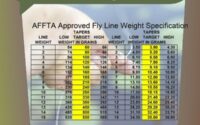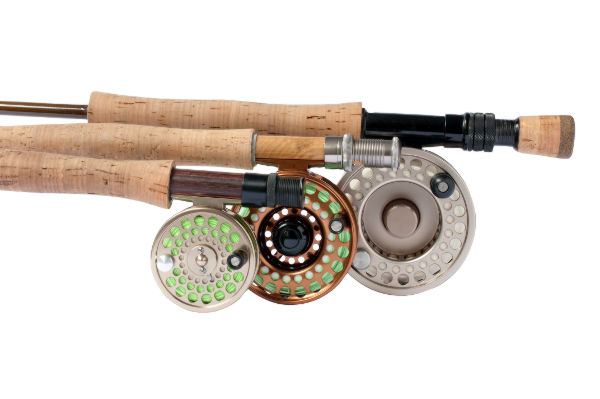| Disclosure: Just to be open and honest the buttons and links you click on in the website will in most cases take you to another website where you can purchase the products I am reviewing. As an Amazon Associate I earn from qualifying purchases. |
Essential Flies For Every Fly Fishing Angler
Quick Post Navigation
- Why Fly Selection Matters
- The Anatomy of a Fly
- Categories of Flies: An Overview
- Top 10 Must-Have Flies for Every Angler
- How to Select the Right Fly for Different Conditions
- Tying Your Own Flies: The DIY Advantage
- The Future of Fly Tying: Innovative Materials and Designs
- Conclusion: The Fly Box Essentials for Every Fisher
- FAQs
- “Check out some of our other Buying Guides”
Introduction
Fly fishing is more than just casting and reeling in a line—it’s about understanding the behavior of fish and replicating their food sources as realistically as possible. What sets a seasoned angler apart from a beginner often comes down to one key element: fly selection. Picking the right fly can mean the difference between a successful day on the water and hours of frustration. In this guide, we’ll explore the essential flies every fly fisher should have in their box, no matter where they are casting.
Why Fly Selection Matters
Imagine you’re at a restaurant and the menu only offers one dish. You’re hungry, but it’s not your favorite, so you pass. Fish are the same way. They won’t bite just anything—especially in waters teeming with various food sources. The right fly mimics the local prey perfectly, making it an irresistible option for the fish you’re targeting. Fly selection matters because, to fool a fish, you need to match what’s already on the menu.
The Anatomy of a Fly
Before we dive into specific fly patterns, it’s helpful to know what makes a fly tick. Every fly is crafted with three basic parts: the tail, body, and hackle. These parts work together to replicate the appearance and behavior of insects or baitfish. The tail mimics movement, the body gives it shape, and the hackle—usually made from feathers—adds realism by mimicking wings or legs. Understanding this anatomy is critical when choosing or tying flies.
Categories of Flies: An Overview
There are four main categories of flies every angler should be familiar with. Each serves a unique purpose and mimics different stages of an insect’s life or entirely different prey.
1. Dry Flies
Dry flies imitate adult insects sitting on the surface of the water. These are perfect for when you notice fish rising to the top to feed. There’s something magical about watching a fish break the water to snag your dry fly.
2. Wet Flies
Wet flies are fished beneath the water’s surface. These mimic drowned insects or emerging larvae. Fish often prefer wet flies in slower currents or deeper waters where they can lazily feed below the surface.
3. Nymphs
Nymphs are the underwater larvae or immature stages of aquatic insects. Since fish spend a lot of time feeding below the surface, nymphs can be incredibly effective and are a staple in every angler’s arsenal.
4. Streamers
Streamers imitate small fish, leeches, or other aquatic creatures. They’re usually larger and fished with more aggressive movement to simulate a fleeing prey, making them a favorite for targeting predatory species like bass or trout.
Top 10 Must-Have Flies for Every Angler
While there are hundreds of fly patterns, some are just timeless and work across various conditions and water bodies. Let’s dive into the top 10 flies every fly fisher should carry.
1. Adams Dry Fly
The Adams is a versatile dry fly that works in almost any situation. It imitates a wide variety of mayflies and is one of the most reliable flies for trout fishing.
2. Woolly Bugger
The Woolly Bugger is a jack-of-all-trades. It can mimic baitfish, leeches, and even large nymphs. Whether you’re fishing in rivers, lakes, or streams, the Woolly Bugger is a go-to.
3. Pheasant Tail Nymph
This classic nymph is a must-have for any angler. The Pheasant Tail Nymph imitates a wide range of underwater insects and works year-round in various water conditions.
4. Elk Hair Caddis
Perfect for fast-moving waters, the Elk Hair Caddis is a durable dry fly that mimics adult caddisflies. Fish can’t resist the lifelike flutter it creates on the water’s surface.
5. Royal Wulff
A high-floating dry fly with an attractive color combination, the Royal Wulff is ideal for rougher waters. Its buoyancy makes it easy to spot, and fish love its bright and bushy appearance.
6. Clouser Minnow
Looking for a good streamer? The Clouser Minnow is fantastic for targeting larger predatory fish. It imitates baitfish and works well in both saltwater and freshwater environments.
7. Zebra Midge
For cold-weather fishing or targeting picky trout, the Zebra Midge is a tiny but mighty nymph pattern. Fish it deep, and it can produce strikes when other flies fail.
8. San Juan Worm
The San Juan Worm is incredibly simple but incredibly effective. When the water is muddy, or the fish are being picky, this imitation of an aquatic worm often saves the day.
9. Parachute Adams
Similar to the Adams, but with a parachute hackle, this fly lands softly and stays visible in faster currents. It’s a top choice for fishing dry flies in turbulent water.
10. Hare’s Ear Nymph
The Hare’s Ear is a fuzzy, realistic nymph that represents everything from mayflies to stoneflies. Its natural appearance makes it a winner in all types of water.
How to Select the Right Fly for Different Conditions
Choosing the right fly isn’t just about picking a popular pattern—it’s about understanding the environment and the fish’s behavior. Here are three key factors to consider.
Seasonal Fly Selection
Different seasons bring different hatches. In spring, for instance, insects like mayflies are abundant, while in summer, grasshoppers and ants come into play. Tailoring your fly selection to the season dramatically improves your chances of a successful catch.
Understanding Water Conditions
Water clarity, depth, and temperature affect what flies fish are likely to bite. In clear water, subtle and natural-colored flies work best, while in murky conditions, brighter or larger flies make it easier for fish to see them.
Matching the Hatch
“Matching the hatch” is the concept of mimicking whatever insects or creatures fish are naturally feeding on at that moment. Observing local insect activity and choosing a fly that resembles what’s buzzing or swimming around can dramatically increase your success.
Tying Your Own Flies: The DIY Advantage
Tying your own flies isn’t just a rewarding hobby; it gives you an edge. You can customize patterns to the specific conditions of the waters you fish. Plus, the satisfaction of catching a fish with a fly you tied yourself is second to none. Basic patterns like the Woolly Bugger or the Pheasant Tail Nymph are great starting points for beginner fly tyers.
The Future of Fly Tying: Innovative Materials and Designs
As the sport of fly fishing evolves, so do the materials and techniques used in fly tying. Today, synthetic materials like UV-reflective fibers and foam are becoming increasingly popular. These new materials add durability and a more lifelike appearance, giving anglers an even greater advantage. The future of fly tying will likely see continued innovation with eco-friendly materials and more lifelike designs, keeping the tradition alive while adapting to modern needs.
Conclusion: The Fly Box Essentials for Every Fisher
Having the right flies in your fly box can make or break your day on the water. From dry flies like the Adams to nymphs like the Pheasant Tail, these essential patterns have stood the test of time because they work in various conditions. Fly fishing is a balance of art and science, and knowing which flies to use—and when—is a key part of that equation. Whether you’re a beginner or an experienced angler, filling your box with these must-have flies will set you up for success.
FAQs
1. What is the best fly to use for trout?
The Adams Dry Fly and Pheasant Tail Nymph are two of the best all-around flies for trout. They imitate common insects and are effective year-round.
2. Can I use the same flies for saltwater and freshwater fishing?
Some flies, like the Clouser Minnow, work well in both saltwater and freshwater. However, it’s best to tailor your selection to the specific environment and species you’re targeting.
3. What’s the easiest fly to tie for beginners?
The Woolly Bugger is a great starting point for beginners. It’s versatile, relatively easy to tie, and effective in a wide range of fishing conditions.
4. How often should I change my fly when fishing?
If you’re not getting any bites, it’s a good idea to change your fly every 15–30 minutes. Observe what’s happening in the water and try to match the local hatch or baitfish activity.
5. Do I need different flies for each season?
Yes, different insects and prey are more abundant at certain times of the year. Adjusting your fly selection to match the seasonal hatch improves your chances of success.



